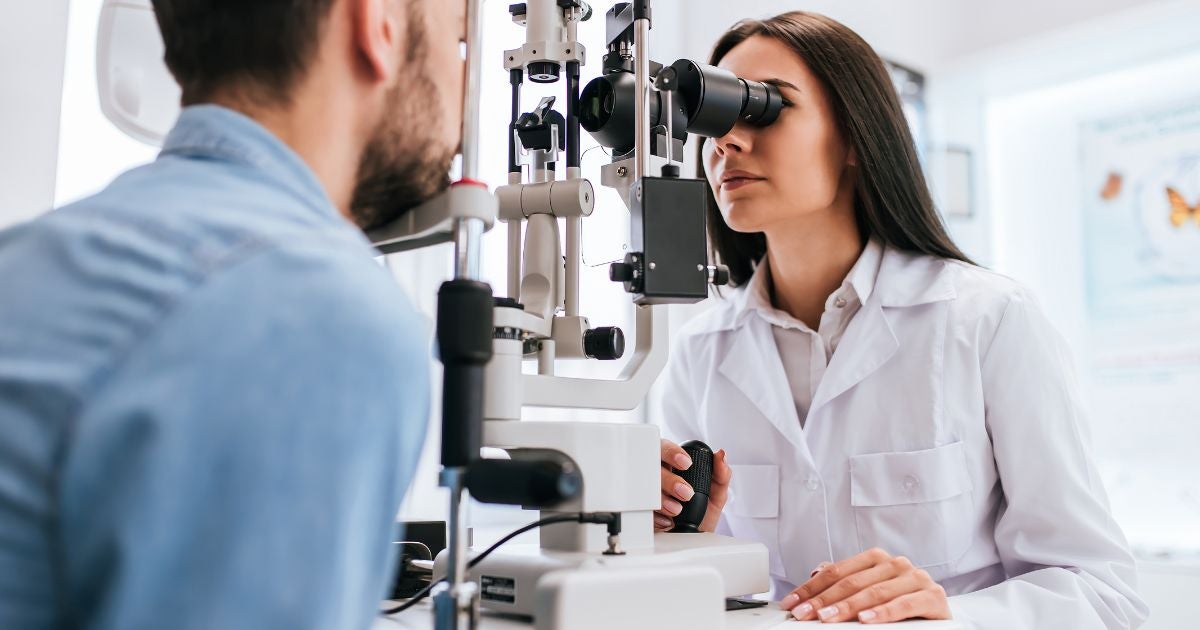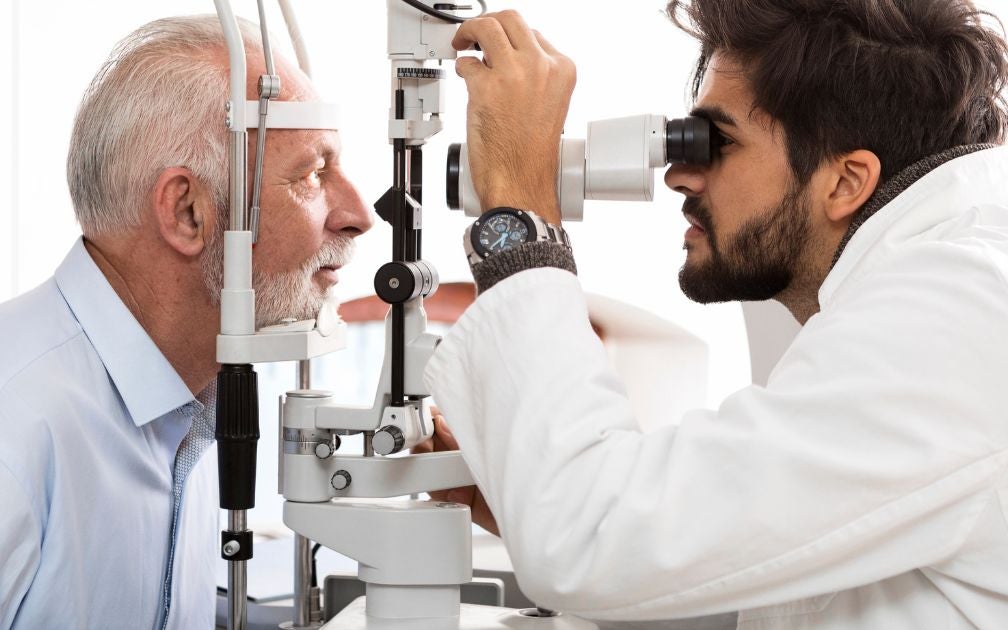Best Cannabis Strains for Glaucoma Treatment: A Comprehensive Guide to Finding Relief
Table of Contents
-
-
If you or a loved one are seeking natural alternatives to manage glaucoma, you may be researching the best cannabis strains for glaucoma treatment. In this comprehensive guide, we’ll highlight strains known for their potential in reducing intraocular pressure and providing relief. From high-CBD options to specific terpene profiles, we’ll examine the science behind their efficacy and offer insights on consumption methods. Join us as we uncover the top cannabis strains that could make a difference in glaucoma treatment, bringing you hope and improved ocular health.
Understanding Glaucoma
Glaucoma is a complex eye condition that can lead to irreversible vision loss if left untreated. It is characterized by damage to the optic nerve, often caused by increased intraocular pressure (IOP). The optic nerve is responsible for transmitting visual information from the eyes to the brain, making its health crucial for clear vision.
There are different types of glaucoma, including open-angle and angle-closure glaucoma. Open-angle glaucoma is the most common form and develops gradually, whereas angle-closure glaucoma is characterized by a sudden increase in IOP. Both types can be detrimental to eye health and require appropriate management.
 Increased intraocular pressure plays a significant role in glaucoma development. It occurs when the fluid inside the eye, called aqueous humor, is unable to drain properly. As a result, the pressure builds up, leading to optic nerve damage. This damage can cause peripheral vision loss, blurred vision, and, if left untreated, eventual complete blindness.
Increased intraocular pressure plays a significant role in glaucoma development. It occurs when the fluid inside the eye, called aqueous humor, is unable to drain properly. As a result, the pressure builds up, leading to optic nerve damage. This damage can cause peripheral vision loss, blurred vision, and, if left untreated, eventual complete blindness.
Symptoms and Risks of Untreated Glaucoma
Glaucoma is often referred to as the “silent thief of sight” because it typically progresses without noticeable symptoms in its early stages. However, as the condition worsens, individuals may experience various symptoms, including:
-
-
-
-
- Gradual loss of peripheral vision
- Tunnel vision
- Blurred vision
- Eye pain
- Redness in the eyes
- Halos around lights
-
-
-
If glaucoma is left untreated or undiagnosed, it can lead to severe consequences. The damage to the optic nerve is irreversible, and the risk of complete vision loss increases significantly. Regular eye examinations and early detection are crucial for managing glaucoma effectively.
The Potential Benefits of Cannabis for Glaucoma Treatment
Cannabis has gained attention as a potential treatment option for glaucoma due to its ability to lower intraocular pressure. The cannabinoids present in cannabis, such as THC and CBD, have shown promise in reducing IOP temporarily. This reduction in pressure can help alleviate the strain on the optic nerve and potentially slow down the progression of glaucoma.
While cannabis may offer benefits for glaucoma treatment, it is essential to approach it with caution and under professional guidance. It is important to note that the effects of cannabis on intraocular pressure are temporary and short-lasting. Therefore, frequent use throughout the day would be necessary to maintain its potential benefits. This frequent use may not be feasible for everyone, and the psychoactive effects of THC can also be a concern for some individuals.
Consulting with a Healthcare Professional
Before considering cannabis as a treatment option for glaucoma, it is crucial to consult with a healthcare professional specializing in eye health. They can provide a comprehensive evaluation of your condition and recommend the best course of action. Glaucoma requires ongoing management, and it is essential to incorporate treatments that have proven efficacy.
Additionally, healthcare professionals can guide you on the appropriate strain and dosage of cannabis for your specific condition. They can consider factors such as your overall health, existing medications, and potential interactions with cannabis. Their expertise will ensure that you receive the most suitable treatment plan while minimizing any risks or adverse effects.
Cannabis and Glaucoma
Explanation of the Potential Mechanisms through which Cannabis May Help Glaucoma Patients
Cannabis has garnered attention as a potential aid in managing glaucoma due to its potential to reduce intraocular pressure (IOP). However, the exact mechanisms through which cannabis exerts its effects on glaucoma are still being investigated.
-
 One possible mechanism is the interaction between cannabinoids, the active compounds in cannabis, and the body’s endocannabinoid system (ECS). The ECS plays a vital role in regulating various physiological processes, including intraocular pressure. Cannabinoids, such as delta-9-tetrahydrocannabinol (THC) and cannabidiol (CBD), can bind to cannabinoid receptors in the ECS, modulating the signaling pathways involved in IOP regulation.
One possible mechanism is the interaction between cannabinoids, the active compounds in cannabis, and the body’s endocannabinoid system (ECS). The ECS plays a vital role in regulating various physiological processes, including intraocular pressure. Cannabinoids, such as delta-9-tetrahydrocannabinol (THC) and cannabidiol (CBD), can bind to cannabinoid receptors in the ECS, modulating the signaling pathways involved in IOP regulation.
Discussion of Cannabinoids and Their Interaction with the Body’s Endocannabinoid System
THC, the primary psychoactive compound in cannabis, has been found to have a biphasic effect on intraocular pressure. In lower doses, THC can reduce IOP by enhancing the outflow of aqueous humor, the fluid inside the eye. However, higher doses of THC or prolonged use may lead to a temporary increase in IOP, potentially counteracting the benefits.
CBD, on the other hand, does not have significant psychoactive effects and has shown potential in reducing IOP. It interacts with cannabinoid receptors in a different manner than THC and may modulate intraocular pressure through different pathways. CBD’s anti-inflammatory and neuroprotective properties may also contribute to its potential benefits for glaucoma patients.
Overview of Studies and Research on the Use of Cannabis for Glaucoma Treatment
Numerous studies have explored the effects of cannabis and cannabinoids on glaucoma. Early research, dating back to the 1970s, suggested that cannabis could significantly reduce intraocular pressure. However, subsequent studies have indicated that the effects are short-term and diminish with regular use due to the development of tolerance.
Moreover, the limitations of conducting rigorous clinical trials with cannabis have posed challenges in establishing conclusive evidence for its effectiveness in treating glaucoma. The psychoactive effects of THC and the need for frequent dosing make it difficult to maintain consistent and controlled treatment regimens. Additionally, the potential side effects, individual variations in response, and interactions with other medications further complicate the picture.
The Limitations and Challenges in Establishing Conclusive Evidence for its Effectiveness
One of the significant challenges in determining the effectiveness of cannabis for glaucoma treatment is the lack of well-designed, large-scale clinical trials. The legal and regulatory barriers surrounding cannabis have limited the availability of standardized formulations and controlled studies. The variations in cannabis strains, dosages, and administration methods make it challenging to compare results across different studies.
Another limitation is the short duration of action of cannabis on intraocular pressure. The need for frequent dosing throughout the day may not be practical or sustainable for many individuals. Additionally, the psychoactive effects of THC, such as impairment of cognitive function and changes in mood, can be undesirable for some patients.
Furthermore, individual variations in response to cannabis and potential interactions with other medications underscore the importance of personalized treatment plans and professional guidance.
Factors to Consider When Choosing Cannabis Strains
The Importance of Strain Selection for Glaucoma Patients
Choosing the right cannabis strain is crucial for glaucoma patients seeking symptom relief. Different strains contain varying levels of chemical components that can influence the effects on intraocular pressure (IOP) and overall glaucoma symptoms. Understanding these factors is essential to make informed decisions about strain selection.
Highlighting the Different Chemical Components in Cannabis and Their Potential Effects on Glaucoma Symptoms
Cannabis contains several chemical components that contribute to its therapeutic effects. The two most well-known cannabinoids are delta-9-tetrahydrocannabinol (THC) and cannabidiol (CBD). THC is responsible for the psychoactive properties of cannabis, while CBD is non-intoxicating and has shown potential therapeutic benefits.
THC has been found to temporarily reduce intraocular pressure, making it potentially beneficial for glaucoma patients. However, higher levels of THC may lead to an increase in heart rate and could cause anxiety or cognitive impairment. CBD, on the other hand, has shown potential in reducing IOP and has anti-inflammatory and neuroprotective properties.
Apart from cannabinoids, terpenes are aromatic compounds found in cannabis that contribute to its unique scent and potential therapeutic effects. Some terpenes, such as myrcene and limonene, have shown potential in reducing inflammation and relieving pain. These terpenes, along with cannabinoids, can work synergistically to enhance the therapeutic effects of cannabis.
Factors to Consider in Strain Selection: THC to CBD Ratio, Terpene Profile, and Method of Consumption
When selecting a cannabis strain for glaucoma treatment, several factors should be considered:
-
-
-
-
- THC to CBD Ratio: The ratio of THC to CBD in a strain can significantly impact its effects. Strains with higher CBD content and lower THC levels may be more suitable for glaucoma patients, as they can provide potential benefits without the psychoactive effects associated with high THC strains.
- Terpene Profile: Different terpenes have unique properties that can influence the effects of cannabis. Glaucoma patients may benefit from strains rich in terpenes with anti-inflammatory and neuroprotective properties. Researching the terpene profiles of different strains can help in selecting the most appropriate one.
- Method of Consumption: The method of consuming cannabis can also affect its efficacy. Inhalation methods, such as smoking or vaporizing, provide quick relief but have a shorter duration of action. Edibles and oils, on the other hand, have a slower onset but offer longer-lasting effects. Finding a method that suits individual preferences and needs is important.
-
-
-
-
-
-
Mention of Individual Variations and the Need for Personalized ApproachesIt is essential to recognize that each individual may respond differently to cannabis strains due to variations in physiology and personal preferences. Some individuals may find certain strains more effective than others, and dosage requirements may vary. Therefore, a personalized approach is necessary when selecting cannabis strains for glaucoma treatment.
Consulting with a healthcare professional experienced in medical cannabis is crucial for tailoring the treatment plan to individual needs. They can provide guidance on strain selection, dosages, and methods of consumption based on a comprehensive evaluation of the patient’s medical history, existing medications, and potential interactions.
Best Cannabis Strains for Glaucoma Treatment
Strain 1: Blue Dream
Blue Dream is a cannabis strain known for its unique characteristics that may be beneficial for glaucoma patients. With moderate levels of THC and CBD, it offers a balanced experience without overwhelming psychoactive effects. Its terpene profile includes myrcene and pinene, which have shown potential anti-inflammatory and neuroprotective properties.
Scientific studies and anecdotal evidence have suggested that Blue Dream may help in managing glaucoma. It has been reported to temporarily reduce intraocular pressure, providing relief to individuals with this condition. Although more research is needed, the experiences of glaucoma patients using Blue Dream have been promising, highlighting its potential as a complementary treatment option.
Strain 2: Harlequin
Harlequin is an exceptional cannabis strain that offers potential benefits for glaucoma patients. With its unique attributes and well-balanced THC to CBD ratio, it provides therapeutic effects without the overwhelming psychoactive properties. The strain’s attributes, such as its high CBD content and low THC levels, make it a popular choice among glaucoma patients.
This strain has been reported to alleviate specific glaucoma symptoms, such as reducing intraocular pressure and relieving eye discomfort. While further research is needed to establish its efficacy, user testimonials have highlighted the potential benefits of Harlequin in managing glaucoma symptoms and improving overall well-being.
Strain 3: White Widow
White Widow is a cannabis strain that showcases unique characteristics and potential therapeutic properties for glaucoma patients. With its distinct lineage and high THC content, it offers a promising option for individuals seeking relief from glaucoma symptoms. Studies have suggested that White Widow may contribute to reducing intraocular pressure and relieving associated symptoms.
While scientific evidence is still emerging, user experiences with White Widow have reported positive outcomes in managing glaucoma. Its potential to provide relief from symptoms and improve overall eye health make it a strain worth considering for individuals with glaucoma.
Strain 4: ACDC
ACDC is a cannabis strain known for its properties that may benefit glaucoma patients. With its high CBD content and minimal psychoactive effects, it has the potential to help manage pain and inflammation associated with glaucoma. By targeting these symptoms, it can contribute to a better quality of life for individuals with this condition.
While scientific evidence is limited, user reviews have highlighted the effectiveness of ACDC in alleviating glaucoma-related pain and reducing inflammation. Its potential therapeutic effects make it an attractive option for those seeking relief from glaucoma symptoms.
Strain 5: Cannatonic
Cannatonic is a cannabis strain that offers potential effects on glaucoma symptoms, promoting overall well-being and quality of life for individuals with this condition. With its balanced THC to CBD ratio and notable terpene profile, it provides a comprehensive approach to managing glaucoma. Users have reported positive experiences, with some experiencing a reduction in intraocular pressure and an improvement in overall eye health.
Although more research is needed to understand its full potential, testimonials from individuals with glaucoma have indicated the positive impact of Cannatonic on their daily lives. It may serve as a valuable addition to a personalized treatment plan for glaucoma patients.
Conclusion
In conclusion, selecting the best cannabis strains for glaucoma treatment involves considering factors such as THC to CBD ratio, terpene profiles, and individual variations. Strains like Blue Dream, Harlequin, White Widow, ACDC, and Cannatonic offer unique properties that may provide relief for glaucoma symptoms. However, it is essential to consult with healthcare professionals to receive personalized advice and ensure a comprehensive treatment approach. By tapping into the potential of these strains and working collaboratively with medical experts, we can navigate the intriguing intersection of cannabis and glaucoma, unlocking new possibilities to enhance the well-being and quality of life for individuals facing this challenging condition.
FAQs

What are the best medical marijuana strains to treat glaucoma?
The best cannabis strains for glaucoma typically have a balanced ratio of THC to CBD. Strains like Blue Dream, Harlequin, White Widow, ACDC, and Cannatonic are often recommended for their potential to reduce intraocular pressure and provide relief from glaucoma symptoms.
Why is cannabis good for glaucoma?
Cannabis is believed to be beneficial for glaucoma due to its potential to reduce intraocular pressure, a key factor in glaucoma development. The cannabinoids in cannabis, particularly THC and CBD, may help in managing this pressure and provide temporary relief for glaucoma patients.
Can CBD reverse glaucoma?
While CBD has shown potential in reducing intraocular pressure, there is no evidence to suggest that it can reverse glaucoma. CBD may provide temporary relief and symptom management, but it should not replace prescribed treatments for glaucoma. It is crucial to consult with healthcare professionals for comprehensive glaucoma management.
What cannabis strains are best for hypertension?
Strains with high levels of CBD and low THC are generally recommended for individuals with hypertension. CBD has shown potential in promoting relaxation and reducing blood pressure. Strains like Charlotte’s Web, ACDC, and Harlequin are often mentioned for their balanced cannabinoid profiles and potential benefits for hypertension.
Can cannabis help high pressure?
Cannabis has been suggested to potentially help with high blood pressure due to the potential vasodilatory effects of certain cannabinoids. However, more research is needed to establish its efficacy and safety as a standalone treatment for high blood pressure. It is important to consult with healthcare professionals for personalized advice and to consider approved medical treatments for high blood pressure.
-









